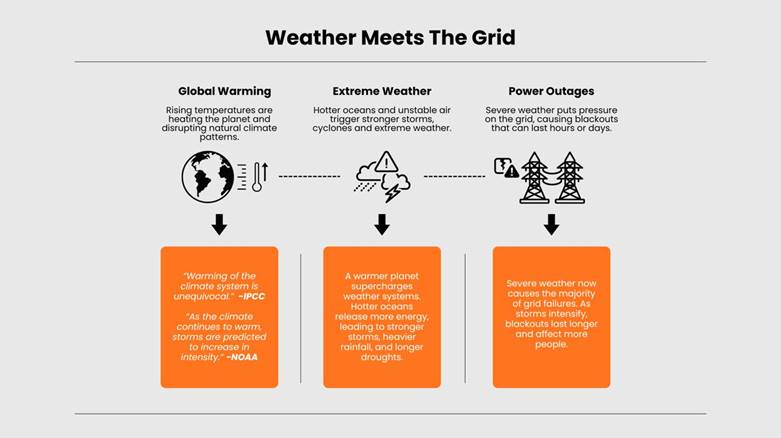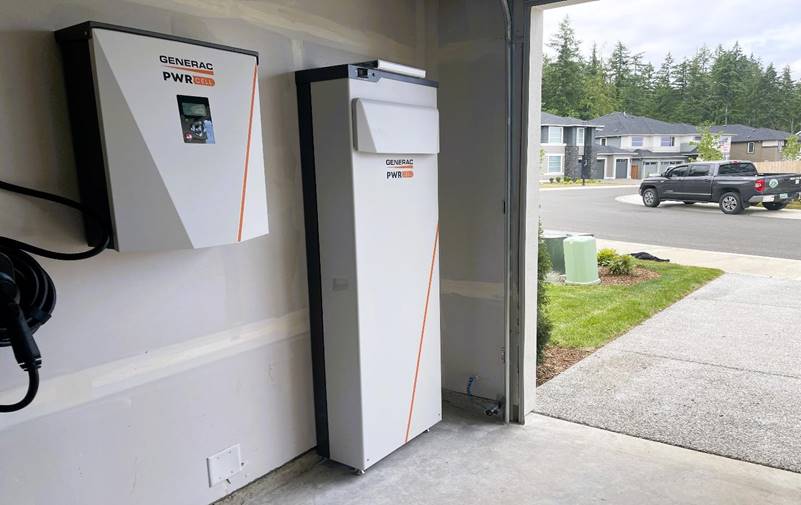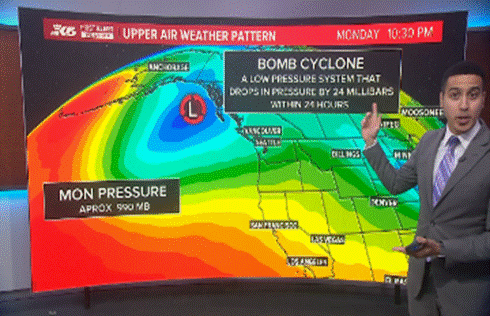On November 19, 2024, a rapidly intensifying “bomb cyclone” slammed the Pacific Northwest. This storm toppled trees onto transmission lines, damaging substations, leaving feeders, poles and spans of wire in transmission corridors impaired.
By the next morning, more than 750,000 homes across Western Washington were without power—one of the largest outages the region has seen in decades. The National Oceanic and Atmospheric Administration (NOAA) has cautioned that as the climate warms, storms of this kind are expected to become more intense, with greater moisture in the atmosphere and energy pushing farther inland.
What failed—and why it matters
Vegetation and saturated soils continue to be the leading cause of power outages across forested regions, coastal zones, and wind corridors such as the foothills of the Cascades. When soil is waterlogged or when parched ground suddenly receives heavy rainfall trees come down, taking power lines with them. This is a permutation of a pattern that is now being played out across our globe.
As the planet warms, these conditions become more extreme. Bomb cyclones, hurricanes, monsoons, and other intense weather systems are colliding with an aging electrical grid, highlighting the urgent need for energy resilience at both community and household levels. Utilities are working to adapt, but the pace of modernization hasn’t kept up with the scale of the threat. When major storms strike, widespread and prolonged outages are no longer the exception with more damage occurring.

Utilities have to triage, making transmission corridors safe before re-energizing substations and then restoring feeders and tap lines in neighborhoods and properties with increasing timelines for power restoration—the result is lengthier outage times for homes. PSE’s timeline during this event mirrors that logic—and underscores that multi-day outages are now a realistic planning scenario for households.
Meanwhile, backup generators didn’t always save the day. Many failed after several hours of continuous use—a generator is an engine and isn’t designed to run around the clock without proper maintenance or a steady supply of fuel. During the bomb cyclone, fire agencies across King County responded to dozens of generator-related incidents, including fires and carbon monoxide concerns, as outages stretched late into the night. It’s a sobering reminder that fossil-fuel generators come with logistical and safety risks, and prolonged use often reveals gaps in upkeep or improper installation.
When large storms knock out power for days, preparation becomes more than a essential. The bomb cyclone made clear that our modern comforts depend on fragile systems, and resilience starts at home. A realistic plan can make all the difference when the lights go out.
What You Can Do
Start with a minimum strategy of 72 hours but be prepared for up to five to seven days without power. Build your plan around several days of self-reliance—covering heat, food, light, and communications. The more you anticipate, the less disruptive the next major outage will feel.
Practical steps to get ready:
- Plan for 5–7 days: Keep enough water, shelf-stable food, flashlights, and batteries to last a week.
- Check trees and vegetation: Before storm season, look for weak or overhanging limbs near power lines, roofs, and driveways. Vegetation management is still one of the simplest and most cost-effective ways to prevent outages.
- Stay connected with neighbors: Create a shared text thread for updates, arrange check-ins for elderly neighbors, and note who has useful equipment like a chainsaw or spare carbon-monoxide alarm. Identify local warming centers in case of extreme cold.
- Keep generators safe and reliable: Run monthly tests, change the oil, and ensure it’s placed outside, well away from doors and windows. Make it a priority to install carbon-monoxide alarms on every floor.
Consider a battery-first backup strategy

Home battery systems offer true energy resilience without the noise, fumes, or fuel dependence of traditional generators. When paired with rooftop solar, a properly sized battery can keep essential circuits running for days—quietly and automatically. During a long outage, that means your lights, refrigerator, phone chargers, Wi-Fi router, and even critical medical devices stay powered while gas stations and roads remain closed.
For many homes, the most reliable solution is a hybrid setup—a solar-charged battery system supported by a small generator for extended events. The generator runs only when needed, drastically reducing fuel use and wear while keeping your battery charged. If you’re considering a home battery system, work with an experienced electrical engineer or qualified installer to size the system correctly for your household’s critical loads and long-term goals.
Conclusion
The November 2024 bomb cyclone was more than a passing storm—it was a warning shot. It showed how quickly extreme weather can overwhelm infrastructure and how dependent modern life is on uninterrupted electricity. As climate change accelerates, these events will become more common and more severe.
Building resilience starts one household at a time. Whether it’s trimming trees, maintaining a safe generator, installing a battery system, or simply knowing your neighbors, every small step strengthens the fabric of community preparedness. The grid may be aging, but individual readiness can bridge the gap until utilities and policy catch up with the new climate reality.
Frequently Asked Questions
1. Why are power outages becoming more common?
Warmer global temperatures mean more moisture and energy in the atmosphere leading to stronger, longer-lasting storms, like bomb cyclones and hurricanes—that place an enormous stress on an already aging power grid.
2. How long should I be prepared to go without power?
At a minimum, plan for 72 hours, but prepare for five to seven days of self-sufficiency. Severe weather can delay utility restoration efforts for multiple days or even weeks.
3. Are home batteries really better than generators?
Each has its role, but batteries provide silent, automatic backup with no fuel or emissions. Generators can run indefinitely with fuel, but require maintenance, safe placement, and carbon monoxide monitoring. A hybrid system often offers the best of both.
4. Can I run my entire home on a battery during an outage?
Most homeowners choose to back up essential loads only—such as lighting, refrigeration, Wi-Fi, and medical equipment—to extend runtime. The right system design and solar pairing can keep those essentials running for days.
5. What’s the most effective way to prevent outages in the first place?
Tree and vegetation management remain the most cost-effective ways to reduce outage risk. Keeping limbs trimmed away from lines and service drops significantly cuts the chance of losing power during storms.




